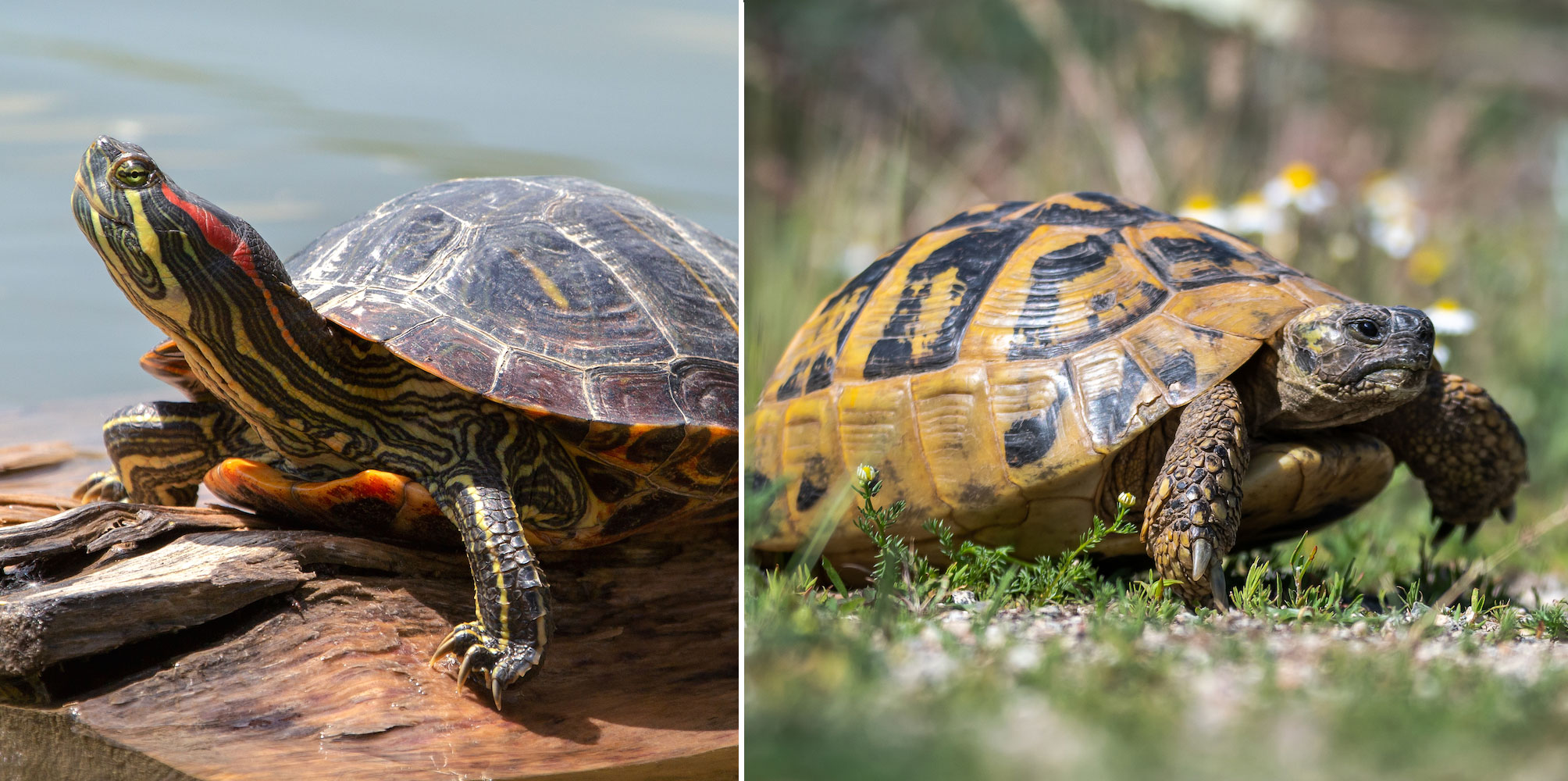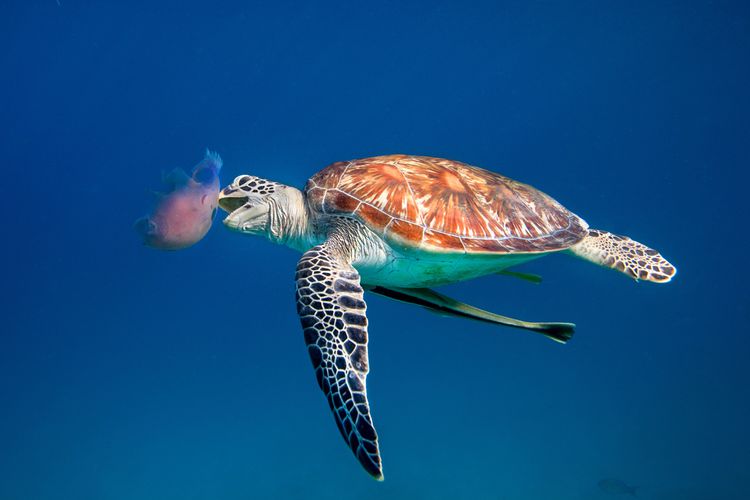
Turtles and tortoises are both reptiles with shells, but they have distinct differences. They look similar with their characteristic bony shells and lipless expressions.
Moreover, in some cases, they are the same: All tortoises are turtles, even though not all turtles are tortoises, and not even all land turtles are tortoises—to make the matter more confusing.
RELATED: Crows Vs. Ravens: Their Common Differences
Tortoises are a type of turtle, but they are specifically land-dwelling reptiles with adaptations for terrestrial life, such as strong, elephant-like legs and a high, domed shell. Turtles, on the other hand, can be aquatic (freshwater or marine) or semi-aquatic, and have flatter, more streamlined shells to aid swimming.
Their Classification
Both turtles and tortoises are reptiles that make up the order Testudines. There are 14 extant families in the turtle order—including sea turtles, snapping turtles, and softback turtles—but to be classed as a tortoise, a turtle must belong to the family Testudinidae.
RELATED: 10 Common Facts about Alligators and Crocodiles
There are around 300 living species across 97 genera in the Testudines order. Eighteen of those genera, and about 49 species, belong to the tortoise family. The main difference between the two is their modes of life: All tortoises are terrestrial, whereas other types of turtles can be aquatic or semi-aquatic. Besides this, tortoises have some different characteristics.
Characteristics of Turtles vs. Tortoises
The order Testudines splits into two suborders: Cryptodira and Pleurodira. Turtles in the former retract their necks on a vertical plane while those in the latter do so on a horizontal plane. Tortoises are exclusively Cryptodira, as are most other turtles, but if you have trouble identifying the different mechanisms of neck retraction (who could blame you), there are a few easier ways to identify turtles and tortoises when you come across a shelled reptile in the wild.
The Shape Of Their Shells

Tortoise shells are more rounded and domed than aquatic or semi-aquatic turtles’, which are thinner, flatter, and more suitable for swimming. The primary function of a tortoise’s shell is protection. Their scutes—the sections on the top of their shells—grow upwards and on top of each other as the animal grows. Other turtles shed their scutes, which help keep their carapaces smooth and slender.
Feet and Legs
One obvious difference between tortoises and aquatic turtles is their feet—or, in the latter’s case, their flippers. Being terrestrial, tortoises have thick and chunky legs often compared to elephant legs, with sets of claws for digging. Terrapins, being semi-aquatic, have webbed feet, and aquatic turtles, like sea turtles, have flippers.
Their Diet

While perhaps not a characteristic you’re likely to witness during a brief turtle encounter, most tortoise species are exclusively herbivorous—you will see them munching on grass, weeds, and flowers. On the other hand, most of their non-tortoise relatives are omnivorous, eating fish and insects in addition to plants.
Conservation Status
The IUCN has assessed 270 turtle species and classed 68 as critically endangered, 46 as endangered, 56 as vulnerable, 35 as near threatened, and 46 of least concern. Of the 58 IUCN-assessed tortoises, 20 are critically endangered, seven endangered, 15 vulnerable, and two near threatened, while six are of the least concern.
About 44% of turtles and tortoises are endangered or critically endangered, not including the 10 species with too little data to be placed in a category. According to IUCN data, 129 species are decreasing in population while only 21 are stable and eight are increasing.
Some of the most endangered turtles are the radiated tortoise, projected in 2007 to go extinct by about 2050; the ploughshare tortoise, projected in 2004 to reach extinction by 2024; and the painted terrapin, whose population had fallen by an estimated 80% at the time of the last assessment in 2018.



